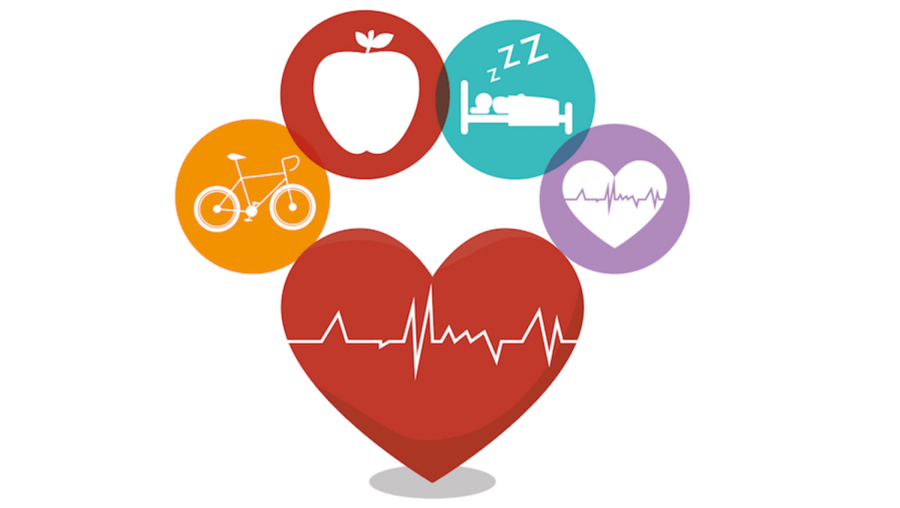Prostate Health: A Comprehensive Preventative Strategy for Men's Well-being
Prostate health is paramount to overall male well-being. This guide presents evidence-based strategies for mitigating prostate-related health risks and promoting a healthy, fulfilling life. We will explore lifestyle interventions, dietary considerations, and the importance of proactive medical management, empowering men to take control of their health journey. The biopsychosocial model will serve as a framework, integrating biological, psychological, and social factors contributing to prostate health.
Understanding the Prostate Gland and Associated Risks
The prostate, a walnut-sized gland located below the bladder, plays a crucial role in male reproduction, producing seminal fluid. While typically asymptomatic in its healthy state, age-related prostate enlargement can lead to benign prostatic hyperplasia (BPH) and, in some cases, prostate cancer. Therefore, a preventative approach is critical for long-term health outcomes. The application of the Health Belief Model highlights the importance of perceived susceptibility, severity, benefits, barriers, cues to action, and self-efficacy in motivating preventative behaviors. Individuals with a higher perceived risk and stronger belief in the benefits of preventative measures are more likely to adopt healthy lifestyles.
Lifestyle Interventions for Optimal Prostate Health
A holistic approach to prostate health necessitates a multifaceted strategy encompassing various lifestyle modifications. These changes not only impact prostate health but also contribute to overall wellness, aligning with the principles of the wellness paradigm.
1. Dietary Optimization: Nutritional Strategies for Prostate Support
Diet significantly influences prostate health. A diet rich in antioxidants and anti-inflammatory compounds offers substantial benefits. The incorporation of foods such as tomatoes (rich in lycopene), cruciferous vegetables (e.g., broccoli, cauliflower, kale), fatty fish (omega-3 fatty acids), nuts (zinc), and fruits high in Vitamin C and E supports prostate health. These nutrients combat oxidative stress and inflammation, processes implicated in prostate disease development. This aligns with the principles of nutritional epidemiology, highlighting the role of diet in disease prevention and management.
2. Physical Activity: The Role of Exercise in Prostate Well-being
Regular physical activity is crucial for overall health and positively impacts prostate well-being. The recommended 150 minutes of moderate-intensity aerobic exercise per week, as outlined by the Physical Activity Guidelines for Americans, improves cardiovascular health, reduces inflammation, and helps maintain a healthy weight. Obesity is linked to increased risk of prostate cancer and BPH, emphasizing the importance of weight management through exercise and healthy dietary practices. This aligns with the social cognitive theory, whereby self-efficacy and observational learning can facilitate adoption of regular exercise.
3. Alcohol Consumption: Moderation and Risk Mitigation
Excessive alcohol consumption is associated with an elevated risk of various health problems, including prostate issues. Adherence to recommended alcohol guidelines, which vary across different health organizations and individual factors, is crucial. Excessive alcohol intake can contribute to inflammation and disrupt hormonal balance, potentially increasing the risk of prostate disease. This strategy is supported by the concept of harm reduction, prioritizing minimizing risks rather than complete abstinence.
4. Hydration: Maintaining Adequate Fluid Intake
Adequate hydration is essential for optimal bodily function, including supporting the urinary system. Consuming at least eight glasses of water daily promotes detoxification processes and contributes to healthy prostate function. This is based on basic physiological principles of fluid balance and its impact on various bodily systems. Dehydration can impair kidney function and potentially exacerbate urinary symptoms related to BPH.
5. Weight Management: Achieving and Maintaining a Healthy BMI
Maintaining a healthy Body Mass Index (BMI) through balanced nutrition and regular exercise is vital for overall health and positively influences prostate health. Obesity is a significant risk factor for several health problems, including prostate cancer and BPH. The adoption of a balanced lifestyle, combining dietary modification and physical activity, is essential for achieving and maintaining a healthy BMI, aligning with the principles of behavior change models like the Transtheoretical Model.
Proactive Medical Management and Preventative Care
Regular healthcare is essential for early detection and effective management of potential prostate issues. Preventative care is instrumental in preserving long-term prostate health.
6. Regular Prostate Examinations: Early Detection and Intervention
Regular check-ups with a healthcare provider are crucial for monitoring prostate health and facilitate early detection of potential problems. Screenings, such as the prostate-specific antigen (PSA) test and digital rectal examination (DRE), can help identify prostate cancer or BPH in early stages, improving treatment outcomes. This is consistent with the principles of screening programs aimed at early detection and disease prevention. The decision for PSA testing should be individualized, based on risk factors and shared decision-making.
7. Family History Assessment: Understanding Hereditary Risks
A family history of prostate cancer or BPH significantly influences individual risk. Men with a strong family history should engage in more frequent screenings and preventative measures. This aligns with genetic epidemiology, understanding the role of inherited factors in disease risk. Genetic counseling may be beneficial for individuals with a strong family history to understand their personal risk and discuss preventative strategies.
8. Stress Management: Promoting Mental and Physical Well-being
Chronic stress negatively impacts overall health, including prostate well-being. Stress management techniques, such as mindfulness, yoga, or regular exercise, reduce stress hormones that may contribute to inflammation and disease progression. This approach is supported by the bio-psychosocial model, recognizing the interrelationship between mental and physical health.
9. Sexual Health and Safe Practices: Preventing Infections
Safe sexual practices are crucial to minimize the risk of sexually transmitted infections (STIs) that can affect prostate health. Consistent condom use and open communication with partners are essential for promoting sexual health and preventing complications. This aligns with public health initiatives promoting safe sex practices to reduce the spread of STIs.
10. Smoking Cessation: Reducing Carcinogenic Exposure
Smoking cessation is crucial for reducing the risk of various cancers, including prostate cancer. The numerous health benefits of quitting smoking extend to improved overall well-being and lower risk of prostate complications. This aligns with established evidence-based tobacco control strategies.
Advanced Considerations for Prostate Health
11. Supplementation: Evidence-Based Approaches
Several supplements, such as saw palmetto and lycopene, have shown potential benefits in supporting prostate health in some studies, but further research is needed to determine their efficacy definitively. It is crucial to consult a healthcare professional before starting any supplements to ensure safety and avoid interactions with other medications. This emphasizes the need for evidence-based decision-making in complementary and alternative medicine.
12. Continuous Health Literacy: Staying Informed and Engaged
Staying informed about the latest research and advancements in prostate health empowers individuals to participate actively in managing their health. Reliable sources of information, such as medical journals and professional organizations, provide updated knowledge and guidance. This supports the concept of health literacy and patient empowerment.
13. Advocacy and Community Engagement: Sharing Knowledge and Resources
Sharing knowledge about prostate health with others increases awareness and promotes proactive health management. Open conversations about prevention and early detection encourage others to prioritize their well-being. This aligns with community health initiatives that promote health awareness and preventive strategies.
Conclusion and Recommendations
Proactive prostate health management is essential for overall well-being. By integrating these lifestyle modifications, prioritizing regular medical check-ups, and actively participating in shared decision-making with healthcare providers, men can significantly reduce their risk of prostate problems and enhance their overall health trajectory. A holistic approach, acknowledging the intricate interplay between biological, psychological, and social factors as illustrated by the biopsychosocial model, is crucial for long-term health and well-being. Further research is needed to explore the long-term effects of various preventative strategies and to identify additional risk factors for prostate disease. Regular evaluation and refinement of preventative guidelines are necessary to reflect advancements in scientific knowledge and medical practice.
Reader Pool: What are your perspectives on the balance between proactive screening strategies and the potential for overdiagnosis and overtreatment in prostate cancer prevention?








No comments yet. Be the first to share your thoughts!